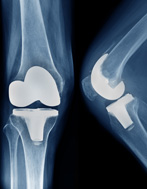Areas of Excellence
Aging, Skeletal Degeneration and Regeneration

Total Funding Approved
- HK$70.688M
Indicative Project Time-Frame
- 2021-2029
Coordinating Institution
- The Chinese University of Hong Kong (Prof. Qin Ling)
The world population is aging. The Hong Kong Government has projected our local population with a rapid increase in aging population from 15% in 2014 to 36% in 2064. The life expectancy of both female and male Hong Kong Chinese ranks No. 1 in the world recently. Incidence of age-associated osteoporosis and bone fractures are high, with one osteoporotic fracture occurring every three seconds worldwide. The associated high mortality rate imposes a huge socio-economic and financial burden to the patients, families,and society. Our mission focuses on clinical translation by providing innovative and effective treatment for age-associated musculoskeletal disorders. Extensive research has been conducted on aging, coordinated and multidisciplinary research facilitating skeletal regeneration in bone metabolic disorders and fragility injuries, especially in searching for bioactive and biodegradable implantable materials for temporal fixation and stimulating skeletal regeneration, are still highly desirable. We recently identified the unique function of neuronal protein regulating the regeneration of skeletons via sensory nerves (Zhang Y. et al., Nat Med, 2016[1]; highlighted as an important milestone in biodegradable metals by Nat Rev Rheumatol and World Biomaterial Society). Our collaborative achievements include identifying the unique biomechanical and biological function of biodegradable metals, especially Magnesium (Mg) as revolutionary biometal (Zheng YF, Qin L, Yang K, 2016, Monograph: Biodegradable Metals[2], and Wang JL et al. Advanced Science, 2020[3]). Degradation of Mg releases Mg ions and hydrogen gas and creates a local alkaline environment. We have delineated that Mg ions stimulate sensory nerve endings in the periosteum and upregulate and release of calcitonin gene-related peptide (CGRP) from dorsal root ganglions. CGRP, an osteogenic neurotransmitter, facilitates differentiation of periosteum-derived stem cell into osteoblast linage, and thus benefit osteoporotic fracture repair, highlighting Mg as an excellent candidate for facilitating skeletal regeneration in elderlies. The alkaline environment and hydrogen gas may also contribute to new bone formation via regulating local inflammation, reducing oxidative stress, and attenuating cell senescence. However, the underlying mechanisms are not well defined. For this AoE proposal, our multidisciplinary team will apply advanced biotechnologies to address these scientific questions while continuing our translational work supported by our previous GRF/ITF/CRF/TRS on innovative biodegradable implants towards multi-centre clinical trials and Class III medical product registration for broadening clinical applications. Our collective efforts will enhance the regeneration of challenging musculoskeletal disorders and hence reduce our healthcare and socio-economic burden of our aging society.
Key References (*Corresponding author)
- Zhang Y, Xu JK, Ruan YC, Yu MK, O'Laughlin M, Wise H, Chen D, Tian L, Shi D, Wang JL, Chen S, Feng JQ, Chow DH, Xie X, Zheng L, Huang L, Huang S, Leung K, Lu N, Zhao L, Li H, Zhao D, Guo X, Chan K, Witte F, Chan HC, Zheng Y*, Qin L*. Implant-derived magnesium induces local neuronal production of CGRP to improve bone fracture healing in rats. Nat Med 22: 1160-1169, 2016.
- 鄭玉峰,秦嶺,楊柯. 2016. 可降解金屬. 科學出版社, 2016.
- Wang JL*, Xu JK, Hopkins C, Chow DH, Qin L*. Biodegradable Magnesium-Based Implants in Orthopedics-A General Review and Perspectives. Adv Sci (Weinh) 7(8): 1902443, 2020.


